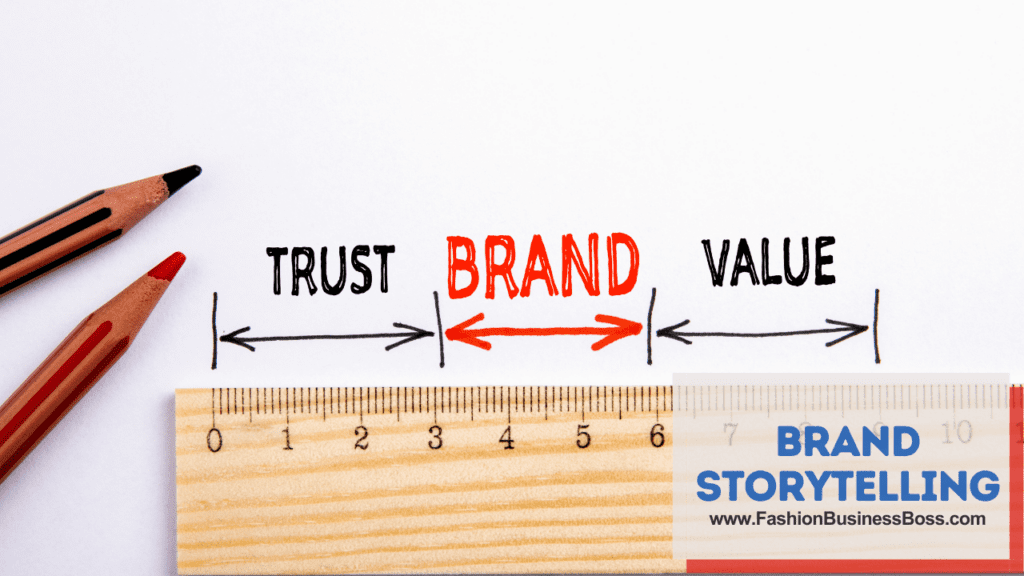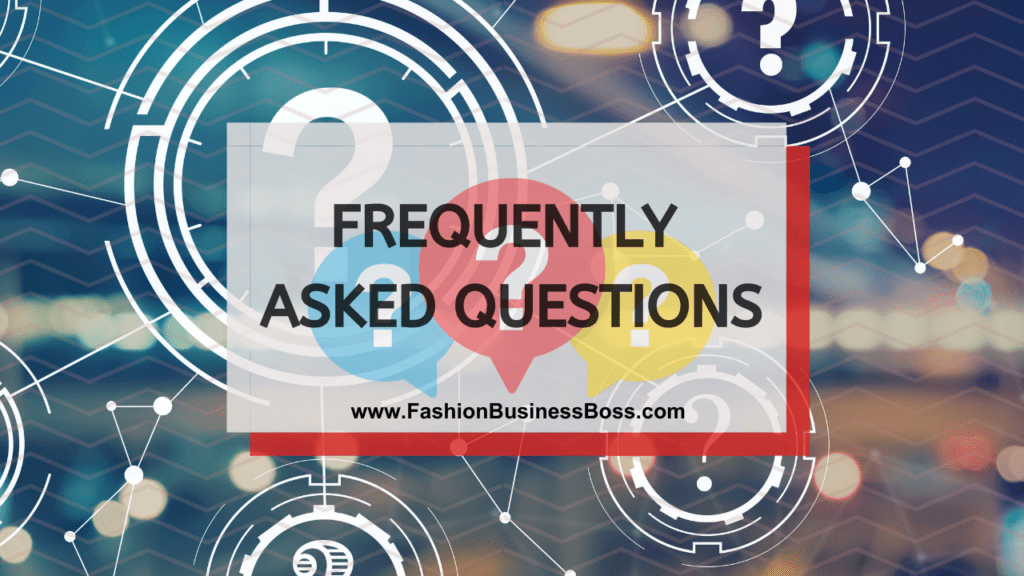The world of fashion is a dynamic and ever-evolving industry, offering immense opportunities for creative individuals with a passion for design and style. If you’ve dreamt of creating your own fashion brand, you’re in for an exciting journey.
To build a fashion brand, craft a compelling brand story, track trends, engage with customers, earn sustainability certifications, seek collaborations, monitor ROI, explore extensions, ensure transparency, leverage influencers, and have a crisis plan.
In this article, we will walk you through the steps to transform your vision into an effective fashion brand.
Brand Storytelling

Brand storytelling is about creating a captivating narrative that speaks to your intended audience, evoking emotions and forging a connection with your brand. This story should illustrate the values, mission, and essence of your brand in a way that resonates with your customers.
When you craft a compelling brand story, you provide a clear picture of what your brand represents and why it matters. This narrative should reflect the genuine, authentic aspects of your brand, offering customers a reason to relate to and engage with it.
A powerful brand story goes beyond just selling products; it becomes a bridge between your brand and the consumers. It taps into the emotions, beliefs, and desires of your target audience. By doing so, it fosters a sense of loyalty and trust.
A well-told brand story can make your brand more relatable and memorable to your customers, helping them feel a deeper connection to your products or services. This connection can lead to increased customer loyalty and a stronger brand presence in the market.
Read more about: Design, Create, Brand: Your Clothing Adventure
Trendspotting
Trendspotting in the fashion world involves closely observing new fashion trends and understanding what consumers prefer. It’s about staying up-to-date with what’s currently popular and adjusting your designs to align with these evolving tastes.
Fashion trends are like currents in a river, ever-changing and influencing what people like and buy. By keeping a vigilant eye on these trends, you can respond to shifts in consumer preferences and create designs that resonate with your target audience.
For example, if eco-friendly materials become popular, you can adapt your designs to incorporate sustainability. If a particular color or style gains popularity, you can adjust your offerings to reflect these changes.
Being prepared to adapt your designs means you are flexible and responsive. It ensures that you can meet the demands of your customers and remain relevant in the competitive fashion industry. In essence, trendspotting helps you keep your finger on the pulse of the ever-changing fashion world, ensuring your brand remains current and appealing to your audience.
Customer Engagement
Customer engagement is the process of interacting with your customers, primarily on social media and other platforms. The goal is to build a connection that makes your customers feel like they’re part of a community tied to your brand, fostering loyalty.
Engaging with customers means responding to their comments, messages, and posts. It’s about being approachable and listening to what they have to say, whether it’s feedback, questions, or compliments. This interaction on platforms like Facebook, Instagram, or Twitter provides a way to connect with your audience directly.
By doing this, you create a sense of belonging and trust. Your customers feel valued and heard, which leads to a stronger emotional connection with your brand. This connection can turn one-time buyers into loyal customers who return to your brand because they feel part of a community that shares their values and interests.
Customer engagement is about building relationships and creating a sense of togetherness between your brand and its customers. This sense of community and loyalty can drive long-term support for your brand.
Sustainability Certifications

Sustainability certifications are like badges of honor that show your commitment to responsible and ethical business practices. These certifications, like organic, fair trade, and cruelty-free labels, confirm that your brand is operating in a way that considers environmental and ethical concerns.
For instance, the “organic” certification means that your products are made from materials grown or sourced in environmentally friendly ways, without harmful chemicals. The “fair trade” label signifies that your brand supports fair wages and ethical working conditions for those involved in the production process. “Cruelty-free” demonstrates that your products are not tested on animals, reflecting ethical standards in animal welfare.
Seeking these certifications showcases your dedication to sustainability and ethics, which is increasingly important to many consumers. It gives them confidence that your brand is making an effort to minimize its impact on the environment and ensure humane treatment of workers and animals.
Read more about: Designer Dreams: How to Create Your Clothing Brand?
Collaboration Opportunities
Collaboration opportunities represent the chance to team up with other brands, designers, or artists to create something distinctive and advantageous for all involved.
When you engage in collaborations, you bring together the strengths and uniqueness of multiple entities. It’s like combining different colors to create a new shade. Your brand, alongside your collaborators, can offer something that none of you could achieve independently.
For example, partnering with another designer can result in a new line of clothing that combines your styles and expertise. Collaborating with artists can lead to exclusive artwork or prints for your products. These partnerships can attract a broader audience, exposing your brand to new potential customers.
Collaboration opportunities are a way to expand your brand’s horizons by tapping into the strengths of others. These collaborations can result in unique and exciting products that draw attention and create value for everyone involved. It’s a bit like joining forces to achieve something you couldn’t have done on your own.
Return on Investment (ROI)
Return on Investment (ROI) is like a measuring stick for your marketing efforts. It helps you understand how much value you’re getting in return for the resources you invest. In simpler terms, it answers the question: “Is what we’re doing worth it?”
Evaluating ROI means assessing the effectiveness of your marketing strategies. It’s like looking at the results of your actions. By doing this continuously, you can see what’s working and what’s not. If something isn’t delivering good ROI, it might be time to reconsider or change your approach.
The key benefit of ROI evaluation is that it helps you make better decisions about where to allocate your resources. It’s like managing your budget wisely. When you know what’s giving you the most value, you can put more effort and resources there. This optimizes your marketing efforts and helps you achieve better results with the same or even fewer resources.
Brand Extensions

Brand extensions are like branches of a tree that sprout from the main trunk, expanding and enriching the overall brand experience. These extensions involve exploring additional product categories that resonate with your brand’s core identity.
For instance, if your fashion brand is known for its eco-friendly and sustainable clothing, a logical brand extension could be to introduce accessories like eco-friendly bags or cruelty-free skincare products. These extensions should align with your brand’s values and identity, creating a natural flow for your customers to embrace new offerings.
The advantage of brand extensions is that they allow you to tap into existing customer loyalty. When customers trust and identify with your brand, they are more likely to explore and purchase related products. It’s like offering them a wider menu at a restaurant they already love.
Brand extensions provide an avenue to grow your brand by diversifying your product range. They should feel like a natural progression that complements your existing offerings. When done thoughtfully, these extensions can expand your brand’s influence and capture a broader market, reinforcing your brand’s identity and customer loyalty.
Read more about: Designing Clothes from Scratch: A Creative Journey
Supply Chain Transparency
Supply chain transparency is akin to having clear windows in your house that allow you to see where everything comes from. In the context of a fashion brand, it means keeping a clear, open view of the journey your materials and products take from their sources to your customers.
This transparency allows you to trace the origin of the materials you use. It’s like following a trail of breadcrumbs to understand where everything in your product comes from. When you can do this, you can be certain that your materials are sourced responsibly and ethically.
Furthermore, being transparent reassures your customers that your brand follows ethical practices. It’s like telling them, “Look, we’re not hiding anything. We do things the right way.” This transparency fosters trust because customers know they are supporting a brand that values ethical production methods and responsible sourcing.
Influencer Gifting
Influencer gifting is like sharing your favorite things with your friends, but on a larger scale. It involves sending your products to individuals, often on social media, who have an established presence and a dedicated following. These people, known as influencers or micro-influencers, have a knack for connecting with an audience.
The goal of influencer gifting is to encourage these individuals to create content that features your products. It’s like asking a friend to share a good experience or a favorite book with their circle. This content, which could be in the form of photos, reviews, or videos, promotes your brand indirectly.
Influencer gifting benefits your brand by leveraging the trust and connection these influencers have with their followers. When their followers see them using or endorsing your products, it’s akin to receiving a recommendation from a trusted source, which can spark interest and curiosity.
Crisis Management

Crisis management is a bit like having a fire escape plan in your home. It involves developing a well-thought-out strategy to handle unexpected problems that might harm your brand’s reputation. These problems could be anything from a product issue to a public relations crisis.
The key aspect of crisis management is preparation. It’s like practicing a fire drill so that when a real emergency occurs, you know what to do. In the context of your fashion brand, it means having a plan in place and knowing the steps to take when something goes wrong.
Being swift and transparent is also crucial. When a crisis occurs, it’s similar to calling the fire department as soon as you see smoke. You need to address the issue promptly and openly. This can help prevent the problem from growing and potentially causing more harm.
Crisis management is about being ready for unexpected issues, having a plan in place, and responding quickly and honestly when problems arise. Just like a well-practiced fire escape plan, it can help minimize damage to your brand’s reputation and ensure you’re well-prepared to handle challenging situations.
Read more about: Designing Your Destiny: A Clothing Brand
Conclusion
Building your own fashion brand is a challenging but fulfilling endeavor. You can turn your passion for fashion into an effective business. Remember that patience, perseverance, and a commitment to your brand’s values will be your most valuable assets on this journey. Embrace the dynamic nature of the fashion industry, and never stop learning and evolving. Your unique vision and creativity can make a significant impact in the world of fashion.
Frequently Asked Questions

Q: What is brand storytelling in the context of a fashion brand?
A: Brand storytelling is the practice of creating a narrative that conveys the brand’s identity, values, and purpose to connect with consumers on an emotional level.
Q: How can a fashion brand effectively engage with its customers on social media?
A: Effective customer engagement on social media involves responding to comments, creating interactive content, and fostering a sense of community through meaningful interactions.
Q: What are some examples of sustainability certifications in the fashion industry?
A: Examples of sustainability certifications include GOTS (Global Organic Textile Standard), Fair Trade, and cruelty-free labels, which verify ethical and eco-friendly practices.
Q: How can a fashion brand maintain transparency in its supply chain?
A: Maintaining transparency involves documenting and disclosing information about the origins of materials, suppliers, and production processes, reassuring customers of ethical practices.
Q: Why is a crisis management plan essential for a fashion brand?
A: A crisis management plan is crucial for addressing issues that could damage a brand’s reputation. It ensures a swift and transparent response, mitigating potential harm.
To learn more about starting your own clothing business, check out my startup documents here.
Please note that the contents of this blog are for informational and entertainment purposes only and should not be construed as legal advice. Any action taken based on the information provided in this blog is solely at your own risk. Additionally, all images used in this blog are generated under the CC0 license of Creative Commons, which means they are free to use for any purpose without attribution.

Meet Shawn Chun: Entrepreneur and Fashion Business Fan.
I’m a happy individual who happens to be an entrepreneur. I have owned several types of businesses in my life from a coffee shop to an import and export business to an online review business plus a few more and now I create online resources for those interested in starting new ventures. It’s demanding work but I love it. I do it for those passionate about their business and their goals. That’s why when I meet a designer or boutique owner at a craft fair, farmers market, retail location or anywhere else I see myself. I know how hard the struggle is to retain clients, find good employees and keep the business growing all while trying to stay competitive.
That’s why I created Fashion Business Boss: I want to help fashion business owners like you build a thriving business that brings you endless joy and supports your ideal lifestyle.

